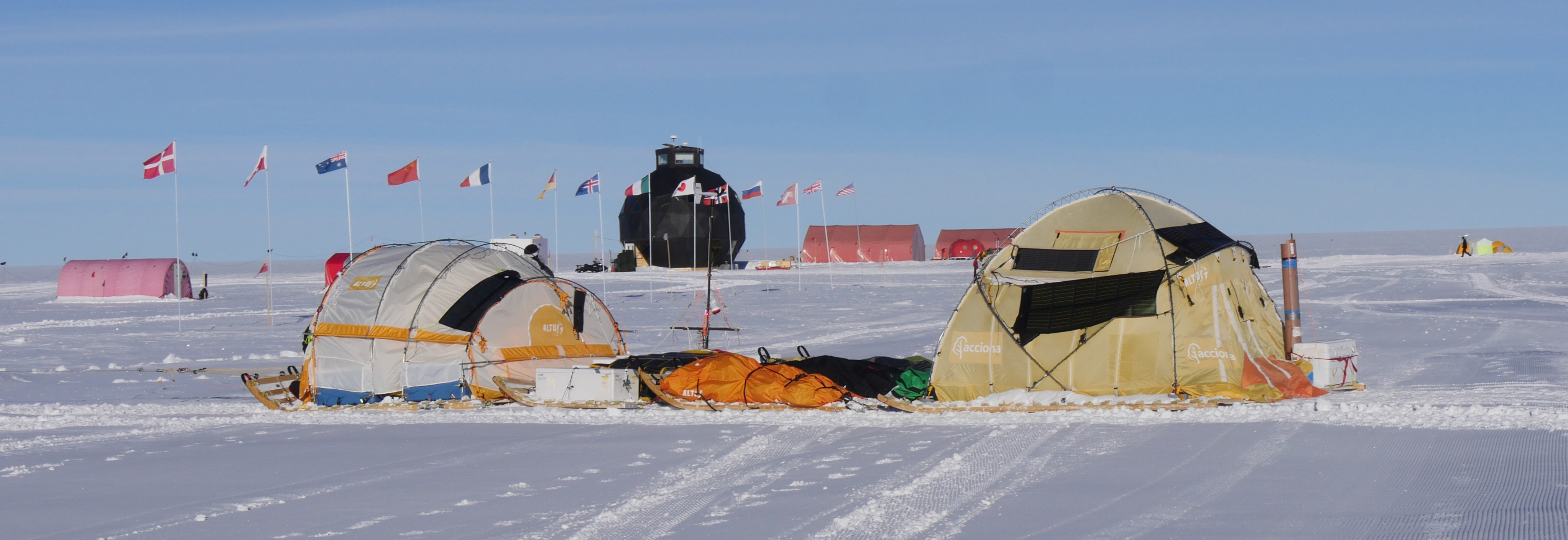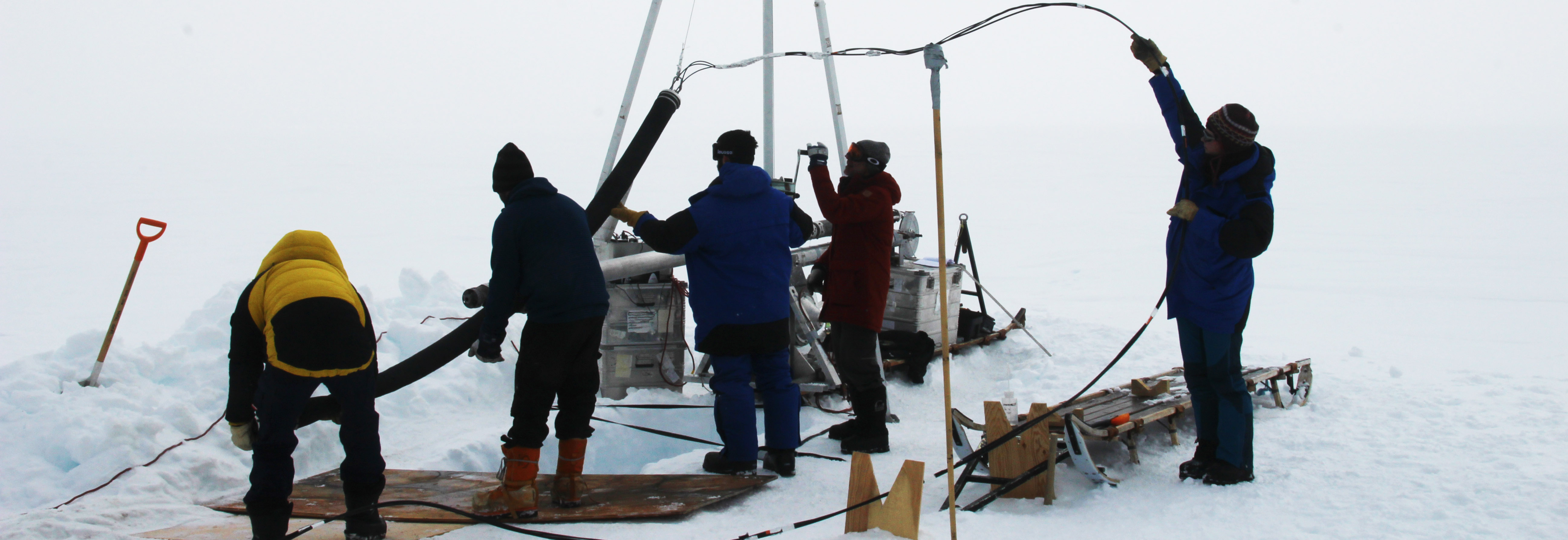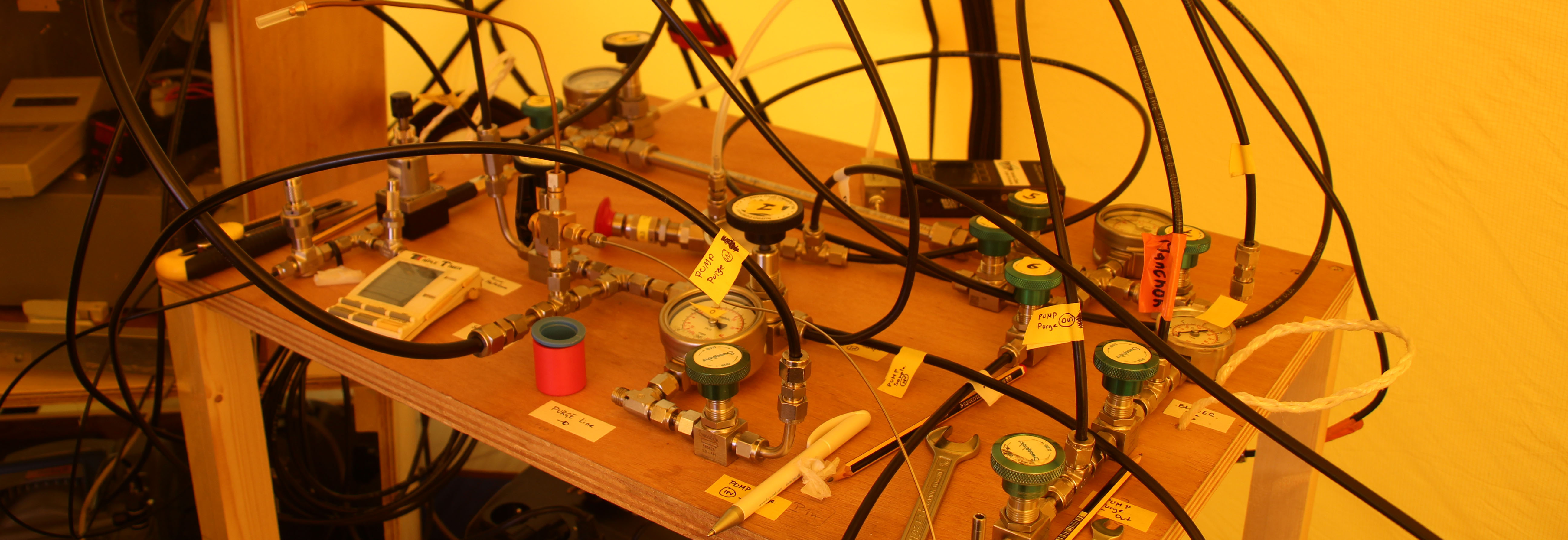
The wind sledge has come to town.
June 19, 2017

The wind sledge has come to town.
Today the casing was mounted in the Swiss borehole, so we hope for a drilling attempt tomorrow. At the firn gas site the drill setup needed maintenance so progress was slow. The science trench is about to finish processing the top 100 m of the ice core and had a record of almost 40 m ice processed. The deep drilling is steady and Nicolas has made a software that enables us to follow the progress of the drilling from main dome.
In the morning it was overcast and very calm, but during the afternoon we got a little wind, it cleared up, and the wind sledge started moving from its position 35 km SW of camp. At 4 pm we could see the sail of the sledge 28 km out. The sledge arrived next to the skiway at around 8pm, from where it was pulled to camp. Thereby the Inuit Windsled IceRiver 2017 expedition was fulfilled, and we received 5 people in camp who had spent a month on the sledge crossing the ice sheet from Kanger.
What we did today:
Weather: Ground fog / low clouds in the morning. Blue sky from 1 pm. Temp. -12°C to -19°C. During the day wind 0-8 kt from SW.
FL, Anders Svensson

The firn gas team: Anaïs, Jesper, Paul, Kevin, Thomas and Jason.

The bladder is on its way into the bore hole at the firn gas site. The bladder has the function of sealing the bore hole so that gas from a specific depth interval can be extracted.

Inside the firn gas tent a complicated setup diestributes the extracted firn gas to a number of sample flasks and bottles.